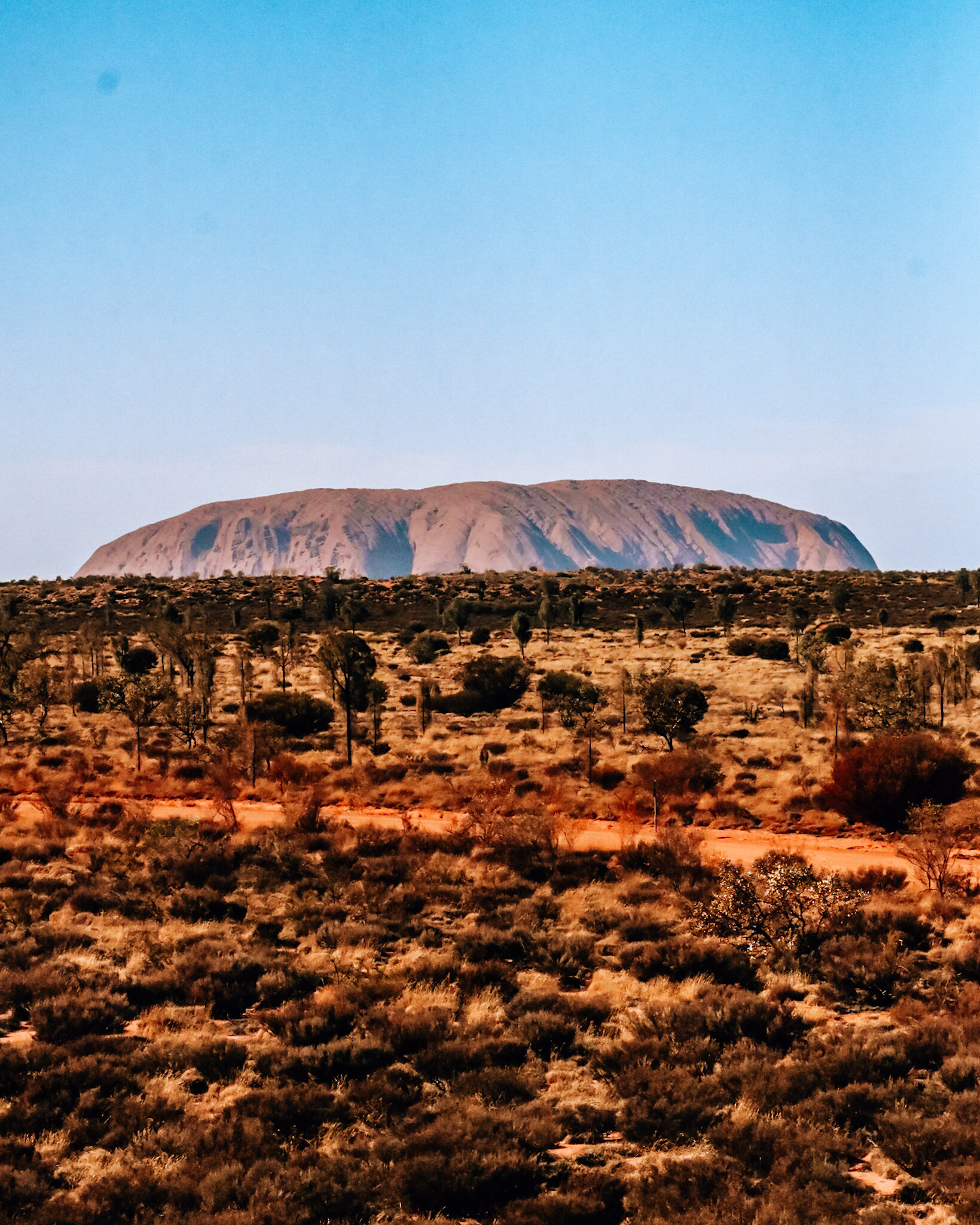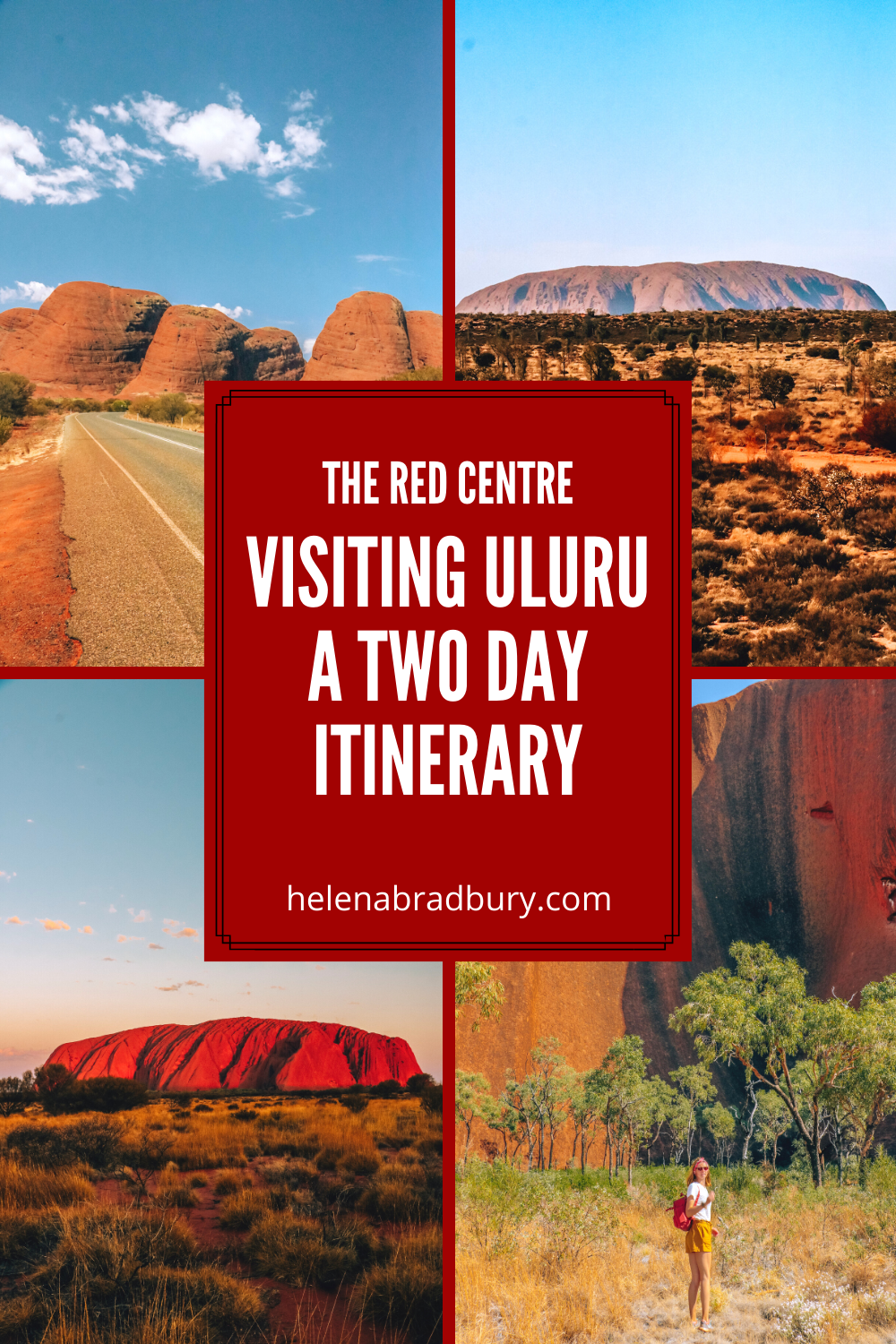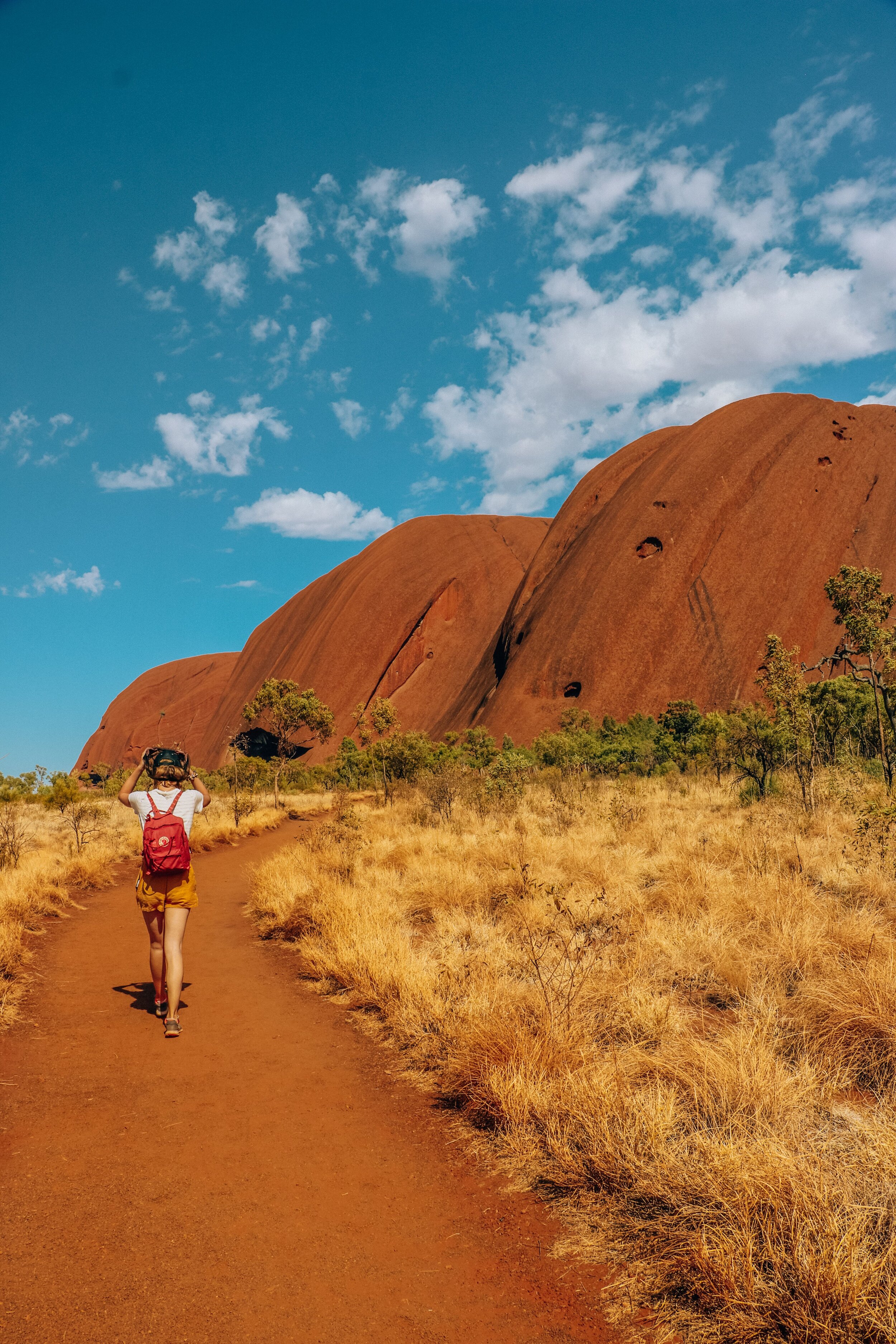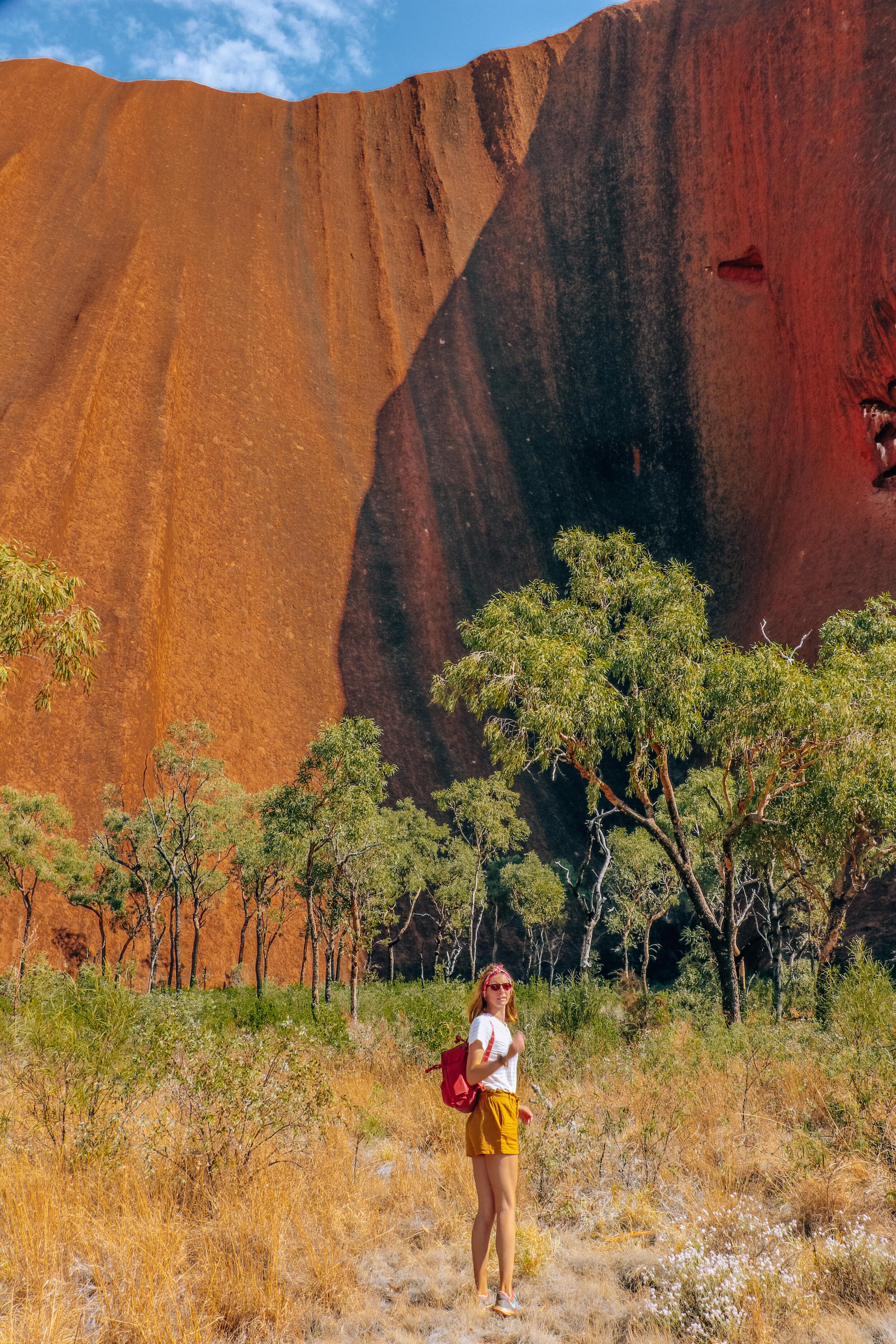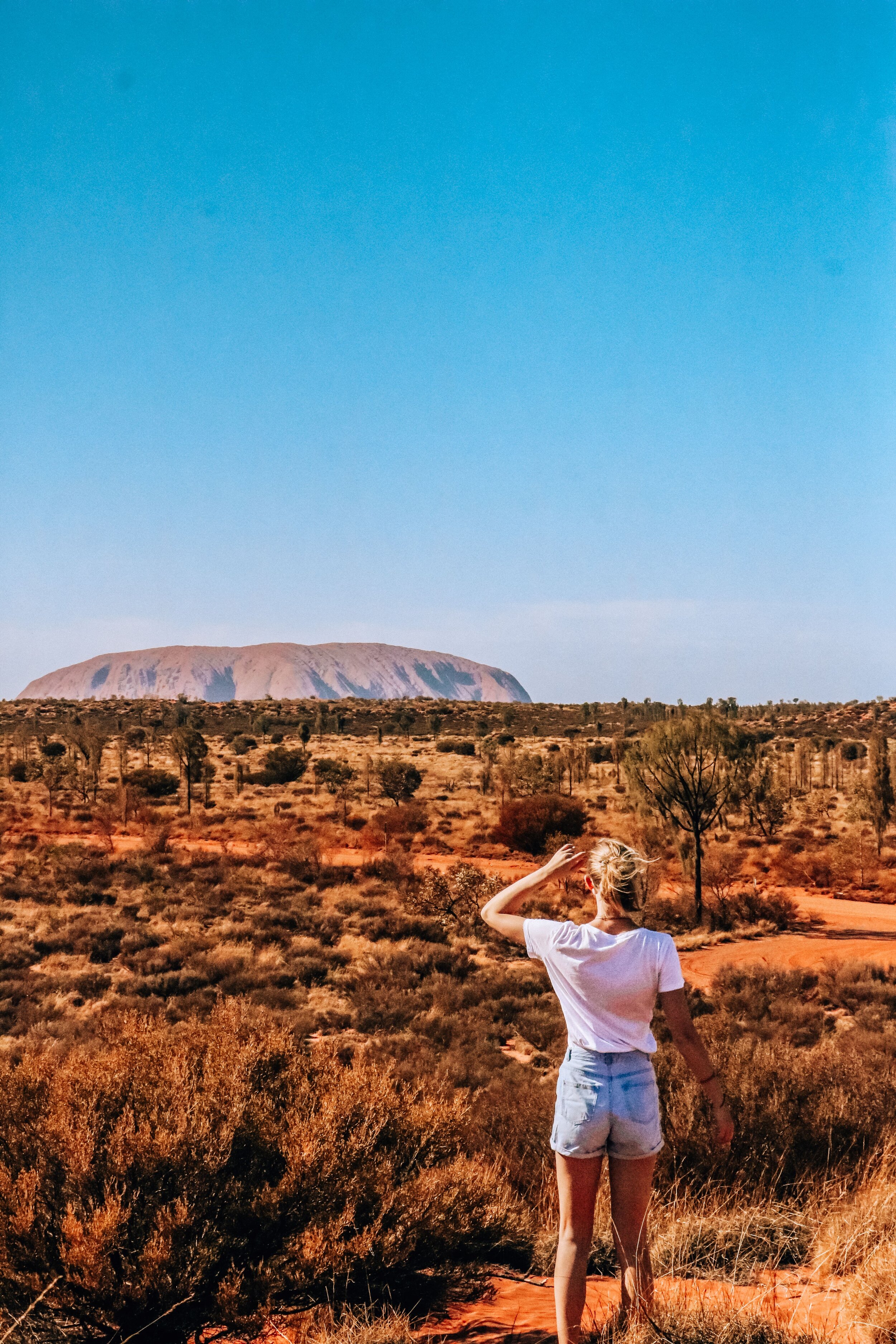Disclosure: This post may contain affiliate links, which means I may receive a commission if you click a link and purchase something. While clicking these links won't cost you anything, they will help me to keep this site up and running! Check out the full disclosure policy for more details. Thank you so much!
Uluru and the red centre are some of the most iconic landscapes in Australia. While getting to Uluru/Ayers Rock might seem difficult, there are domestic flights to Ayers Rock airport from all over Australia and I highly recommend adding Uluru to your Australia itinerary. Whether visiting Uluru-Kata Tjuta National Park itself or the surrounding areas, there are so many things to see and do in Uluru that I would recommend spending at least 2 days there, or up to 5 if you are considering adding places such as Kings Canyon to your Uluru itinerary.
The Best time to Visit Uluru
It’s important to consider the time of year you visit Uluru as the summers in Australia can be extremely harsh, especially if you’re intending to do walks or hikes in the area.
Summer in Australia runs from December to February so during these hottest months I really wouldn’t recommend going during this time, however flights are cheaper as it isn’t peak season so you might prefer to go for the cheaper travel costs.
The winter months are definitely more manageable, June - September, but I would recommend visiting in March/April or October/November to catch the fair weather.
A warning about the weather though, during the warmer months there are a lot of flies and they all land on your face, around your eyes, nose, mouth and ears. I suggest buying a face net like this one, or you can buy one from the visitors centre for around $10.
Despite being in the outback, the temperatures do drop very quickly at night so make sure to bring enough warmer outer layers, especially if you’re intending to camp.
How to get to Uluru
Getting to Uluru will really depend on what your travel plans are within Australia and how long you have.
Driving
I hired a car in Darwin and drove along the Stuart Highway, through the Red Centre, and on to Adelaide. You can read my 10 day road trip guide here: Driving Darwin to Adelaide: the ultimate road trip through the Australian outback.
If you want to drive to Uluru but don’t have time to drive all the way through to Adelaide, the distance from Darwin to Uluru is around 2000km and would take 19 hours, so you could split this into a two or three day drive with stops in the middle such as Katherine, Daly Waters or Alice Springs.
Flying
Uluru has its own airport, Ayers Rock Airport, making flying probably the easiest way to get to Uluru if you’re staying in another major Australian city.
Qantas, Jetstar and Virgin Australia have several flights a week from various Australian cities.
If you aren’t planning on taking an organised tour, you can hire your own car to get around from the Ayers Rock Airport.
Where to stay in Uluru
The Ayers Rock Resort is the main hub in Uluru and is home to most of the accommodation, plus cafes, shops, post office and the petrol station. Everything here should cover all your needs while you’re in Uluru. Be warned though, prices are a lot higher because they have the monopoly in the area, so if you’re self-catering, buy as much supplies as possible in Alice Springs before you drive out to Uluru.
There are various accommodation options available in the Ayers Rock Resort, ranging from luxury, private accommodation, to family-orientated hotels, to the budget campsite.
In general, we found accommodation to be very expensive here, especially as we visited in October, during the peak season. This is ultimately why we decided to stay at the campsite, where facilities are more adequate with toilets, showers, dish and clothes washing stations as well as a pool and camp shop.
Luxury - Sails in the Desert
Mid-range hotels
Self-catered
Budget Accommodation
Outback Pioneer Hotel
Ayers Rock Resort Campground Cabins from $178
Camping - pitches from $43 (what we did)
Do you need a visitor's pass to enter Uluru?
Yes. You will need to buy a visitor pass if you want to enter the Uluru-Kata Tjuta National Park. This fee pays to preserve and maintain this protected area.
Currently, the park pass costs $25 for 3 consecutive days entry and this can be extended to 5 days at no extra cost. But as of 1st November 2020 this will be going up to $38 for 3 days. However if you are travelling with children, the current fee for a child is $12.50, from 1st November 2020 child entry will be free.
This is why I recommend staying for 2 days or more, you’ve already paid the entry free price and with a free extension to 5 days, you can do as much as you want in the area without the extra cost.
The entrance to the National Park is just down the road from the resort entrance and you need to scan your pass to enter through the barrier. You can buy the pass in advance online or when you arrive at the gate. I recommend buying online in advance from here and then download the tickets to your phone to scan as you drive through.
Uluru 2 day Itinerary
Day 1
See sunrise at Uluru
Sunrise and sunset are a must-see at Uluru, the iconic red rock changing colour really is incredible to see.
There is a designated area which is signposted in the park and can also be found on Google Maps - Uluru Sunrise Viewing Area. It’s a short drive from the resort but I think it’s worth it for the once-in-a-lifetime experience of seeing Uluru at sunrise. Plus sunrise is always less busy than sunset so the atmosphere is extremely peaceful.
Do the Uluru Base Walk early in the day
As of October 2019 you can no longer climb Uluru. It is a sacred place for the Anangu people and ownership has officially been handed back to them.
However if you want to see Uluru up close, I really recommend the base walk.
The base walk is a 10km flat walk around the base of Uluru and it takes approximately 3 hours to complete. There is little to no shade for the majority of the walk so I suggest starting early in the day to complete the walk before the midday heat.
Start from the Mala carpark where there is plenty of space to park for free. It is recommended walking clockwise to fully experience the changes to the landscape around Uluru. However there are shorter walks anti-clockwise from the Mala car park if you don’t want to do the full 10km base walk.
Learn more about the indigenous history and culture
After lunch, head over to the visitors’ centre to learn about the history of aboriginal tribes and indigenous culture which has been in the area for thousands of years.
Learn about the meaning and sacred importance of Uluru and Kata Tjuta to the Anangu people.
Also check out the art museums where you can purchase locally made art souvenirs to further support the park preservation and local culture.
Take a picnic to watch Uluru at sunset
Probably the most popular activity at Uluru, so prepare for lots of people! Like at sunrise, there is also a Uluru Sunset Viewing Area signposted in the park and on Google Maps.
Uluru changes colour at sunset and it’s a performance you can’t miss, from the burnt orange of daytime, to the dark red at sundown.
If you go to the main Sunset Viewing Area, I recommend arriving at least 45 minutes before sunset. You may need to arrive earlier to get a parking space along the front row looking out to the rock.
TIP: back your car in, open the truck and set up your picnic in there while you watch the show. And have your camera ready for some snaps.
Visit the Field of Light installation after dark
There are 3 departures daily after sunset which will take you from the resort to the Field of Light art installation.
The Field of Light is a huge art installation, bigger than 7 football fields, created by artist Bruce Monro and it’s his first solar powered art installation. Seeing the lights spread as far as your eye can see across the desert floor really is spectacular.
The Uluru resort have recently confirmed that the installation will remain there indefinitely, however, it is popular so you will need to book your tickets in advance here.
Tickets start from $43 for the return pick-up from the resort and self-guided walk. However there are other, more expensive options available for tours on camel back, or to include dinner.
Day 2
Once in a lifetime experiences
Use your second morning to splash out on an unforgettable experience such as a Uluru camel tour or maybe even a hot air balloon ride at sunrise.
If we had enough time, we would have loved to do a hot air balloon ride, unfortunately they were fully booked as it was peak season, so be sure to book in advance.
Head over to Kata Tjuta (The Olgas)
Although slightly overshadowed by it’s more famous sister, Uluru, Kata Tjuta is actually much bigger than Uluru and rises to a height taller than the One World Trade Center!
Again there has been much done to preserve Kata Tjuta (also known as the Olgas) and return them to the rightful indigenous owners. There are now only two walks open to the public and again I would recommend doing them first thing in the morning or in the later afternoon before sunset to avoid the midday heat.
Walpa Gorge Walk
This is a fairly easy 2.6km walk which can easily be done in the afternoon and with kids, it takes approximately 1 hour. You can access it from the main car park and it’s a return track so you walk back the way you came.
Most people will go to the sunset point in the evening, but if you do happen to be here in the evening, seeing the colour change from inside the gorge is beautiful too.
It’s also one of the few places in the park where you will have the chance to see wallabies!
Valley of the Winds walk
This walk is much more difficult and therefore a lot less popular. It is steep and rocky in places so not recommended for children or those with mobility issues.
The walk is 7.4km and takes 3-4 hours to complete, there are also two lookout points on the way which some point choose to walk to and turn around from there, Karu Lookout and Karingana Lookout.
Enjoy the scenic drives around Kata Tjuta
If more walking on the second day doesn’t take your fancy, please don’t skip out on Kata Tjuta. The roads around the rock formation are completely sealed and tarmacked so you can still drive around the formation and be in awe of the size, as well as take some epic photos!
Enjoy your last sunset at Uluru
If you’re like me and don’t fancy jostling for a sunset spot for a second night in a row at the Sunset Viewing Area, escape the crowds and head to one of these spots for a quieter sunset:
Kuniya Car park/walk
This is much closer to the rock than the sunset viewing point and while you might not get the full effect of the red rock, the sun disappears down one side of Uluru and the dusty orange colours are beautiful to photograph.
Uluru Lookout
This is situated right on the Ayers Rock Resort grounds and can be found on Google Maps. While this spot is further away than the sunset viewing area, I loved this spot because you’re slightly elevated and can see the entire landscape.
If you have longer than two days…
If you have longer than two days I completely recommend visiting Kings Canyon. This other-worldly canyon is incredible and I wish I’d had time to visit. It’s a 3 hour drive from Uluru-Kata Tjuta National Park so you would need an additional full day to visit here.
If you use this itinerary, please let me know!
Like it? Pin it!
Flights: I use Expedia to find great flights and the best deals all over the world, they have regular sales and offers so I always check their website. I also check CheapOair to find cheap deals on round trip flights.
Car Rental: I love the customer service I've always gotten and the variety of options with Rental Cars. But for short notice rentals, I've been using Expedia for the last year, they always seem to have great one-day rates or last-minute rates from the main rental companies.
Accommodation: I prefer the flexibility of booking accommodation with Booking.com so I can cancel or change my reservation without a fee or only pay on arrival for most properties. For longer or more unique stays I prefer AirBnB because you can get the long stay discount, you can also find more unique properties and book experiences with talented locals and businesses. For my budget trips, I always stay in hostels and book through Hostelworld because they have great guarantees if anything does go wrong. If you arrive and your booking is not at the property, they refund the full deposit AND give you $50 extra credit.
Tours and organised trips Although I don’t use tours that often, I do like to book local experiences or day trips once I reach my destination. For that I use GetYourGuide because it has the biggest selection and variety of tour and experience options.
Travel Insurance: I currently use SafetyWing Nomad Insurance. Which allows me to pay a rolling monthly fee to cover my long term travels.
My camera gear and equipment: I use a Canon 77D with an 18-135mm lens or a 50mm lens. And a DJI Mavic Mini Drone. For all my gear including laptops, tripods and more camera accessories read my travel photography gear guide.
